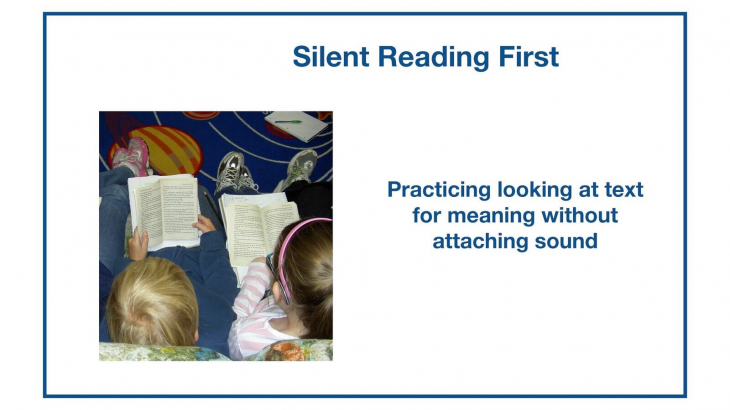What if oral reading is not an option?
Mom’s eyes glistened with tears as she spoke with me. Six-year-old Johnny watched me carefully. His face revealed hope, worry, and intense curiosity. They came to me because they’d heard I “could teach anyone to read.”
“We enrolled Johnny in the best private school in town, knowing he would need extra help,” Mom told me. As you can see, he has cerebral palsy which limits mobility. And he can’t speak much. Our family can understand some of his sounds. They don’t sound like words to other people though. We feel strongly that a good education is his one best hope for a good life — but the school said they couldn’t teach him to read because he can’t speak!”
Myth: Early reading is always oral reading
REALLY?? Professional educators should know better than to perpetuate such a myth! Phonics (sounding out words orally or in one’s head) is powerful stuff. I use it on a daily basis as I teach reading. BUT I ditch it if the situation requires a different approach. Deaf children learn to read without hearing or saying the sounds. Arabic, Chinese, and Hebrew children read their languages without phonics. Non-verbal autistic children can learn to read — some have even taught themselves! Carly Fleischmann, who wrote Carly’s Voice, is a great example. So the idea that early reading must be oral is simply nonsense.
Myth: He’s not reading if I can’t hear it.
The problem with silent reading is not that it doesn’t work — obviously, most of us read silently most of the time. The problem lies with the teacher who can’t hear what goes on in the child’s head, so can’t tell if he or she is reading or just looking at a book, and can’t gauge progress using standard tests for early grades. To be fair, elementary teacher training does not include “silent first” reading techniques.
Silent Reading
“I can teach Johnny to read,” I told his mom. Johnny loved playing with an iPad, so I suggested they purchase FarFaria, an app that reads children’s books aloud while highlighting the words as they are said. Johnny loved it! I showed him words and matched them to objects; then we played lots of games using those words. Soon we advanced to treasure hunts with simple directions; “Look under the chair.” In a few months, Johnny was checking out books at the library along with the audio version of the same book. He watched the words as the reader read the story in his headphones. Was he really reading? You bet — he turned the pages at the right time. When Johnny no longer wanted to have the audiobook, it was time to test for a reading level. A silent reading comprehension test from Readworks.org confirmed that he read and comprehended second-grade texts. He was at grade level with his peers. He was thrilled to join his friends at school.
If oral reading doesn’t work, change to silent reading
Johnny couldn’t pronounce words because of CP. Some of my students who are deeply dyslexic, cannot read orally and comprehend meaning at the same time, because of the way their amazing brains are differently wired. Some of my autistic students are non-verbal, but love to put on headphones and follow along with a reader on the iPad. Students who suffer a TBI (traumatic brain injury) may need to skip oral reading for a while. Teachers and parents must be willing to let go of standard techniques and teach silent reading first if that fits the child’s needs.
My Left Foot
I asked Johnny, “What’s your favorite movie?” He carefully typed on his iPad with one finger, “My Left Foot.” This movie tells the true story of an Irish author with CP who penned his novels using the only thing he could move — his left foot.
by Yvonna Graham, M.Ed.
www.dyslexiakit.net
@GrahamYvonna
